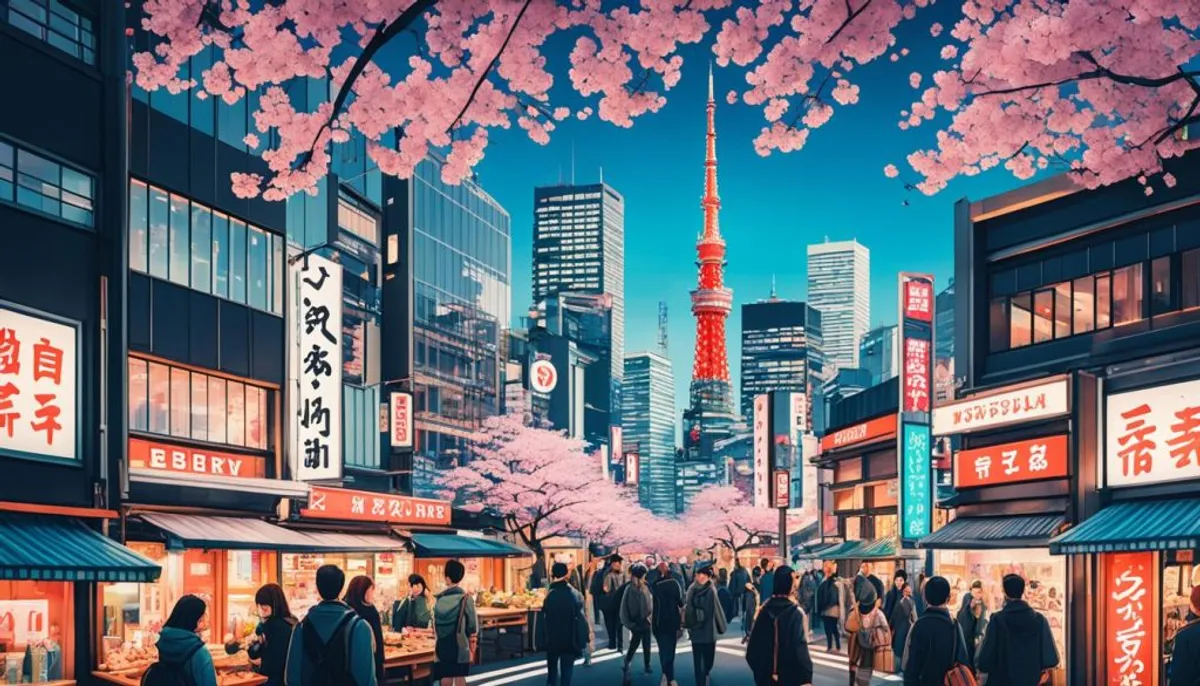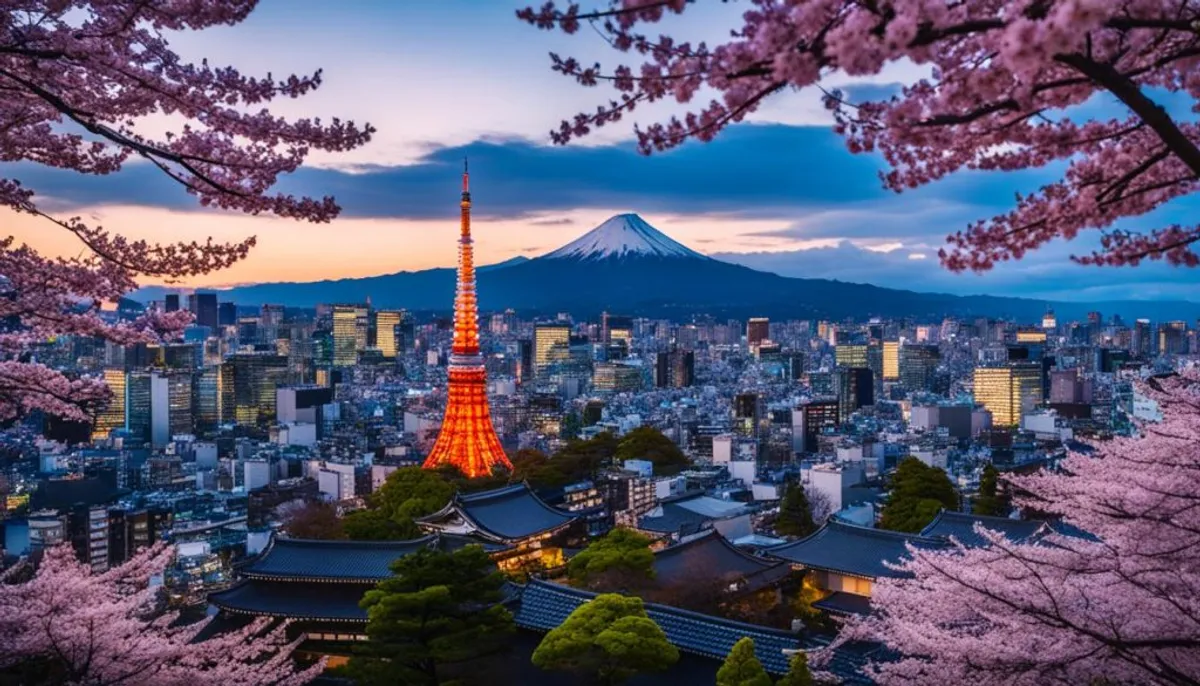The Tokyo Metropolis is a special region in Japan. Also known as the Tokyo Metropolis, it is located on the island of Honshū. It has a large population, with 14,048,000 people as of October 2020.
Tokyo is the largest area in Japan. The city of Tokyo is its heart. It has 23 wards, where many people reside.
To the west, it is less populated. This began in 1871. At that time, it was Edo, the capital of Japan. In 1868, Edo became Tokyo and the capital.
Overview of the Tokyo Metropolis
The Tokyo Metropolis is known by several names. It is the Japanese capital. It has a special local administration. This distinguishes it from other Japanese prefectures.
The Tokyo Bay is located to the east. Besides the main territory, it includes distant islands. For example, the Izu and Ogasawara Islands. The former Edo Castle is now the Imperial Palace. A small part can be visited. Tourists come to see the public gardens of Higashi Gyôen.
Tokyo is also a major international financial center. The Tokyo Stock Exchange is very important. The Bank of Japan and the largest banks are located here. There are many businesses and government offices. Tokyo is the heart of media and publishing. It is also home to numerous universities.
| Key Statistics of the Tokyo Metropolis | Figures |
|---|---|
| Population | 14,264,798 inhabitants as of May 2022. Tokyo is the most populous prefecture in Japan. Greater Tokyo is the most populated urban area in the world, with 40,800,000 inhabitants. |
| Population Density | With 6,511 inhabitants per km², Tokyo is very densely populated. |
| Area | It covers 2,190.93 km². This ranks it 45th in terms of size among prefectures. |
| Global Rank | In terms of gross urban products, Tokyo ranks first in the world. It is also highly ranked by the Global Power City Index, coming in 3rd place in 2021. |

Main Tourist Attractions of the Metropolis
The Tokyo Tower is very famous. It was built a long time ago. The Skytree was added in 2012, and it is the tallest in Japan. Some places in the Japanese capital are known everywhere. Shinjuku is a bustling area. It is where the Tokyo Metropolitan Government is located.
The Shibuya Scramble Crossing is very lively. It is a symbol of city life. Nearby, Harajuku is trendy. You can also visit the Meiji Shrine there. A little further away is Akihabara, popular with technology and otaku culture fans. Ginza is the place for luxury shopping.
| Attraction | Details |
|---|---|
| Tokyo Skytree | The tallest broadcasting tower in the world, reaching 634 meters. Its construction was estimated at 550 million euros. |
| Senso-ji Temple | The oldest Buddhist temple in Tokyo, built in 628. |
| Tokyo Tower | Standing at 333 meters, surpassing the Eiffel Tower. |
| Yoyogi Park | Located in the center of Tokyo, it welcomes people of all ages throughout the year. |
| Ueno Park | Opened in 1876, it has been managed by the Imperial Household Agency since 1980. |
| Akihabara District | Renowned for offering a wide selection of inexpensive electronic products. |

What is the Tokyo Metropolis?
The Tokyo Metropolis has many islands. Some are over 1,000 km from Honshū. This includes the Izu and Ogasawara archipelagos.
Narita International Airport is the main entry point. It is located to the east of Tokyo, about 70 km away. Tokyo-Haneda International Airport, closer to the center, mainly handles domestic flights.
Tokyo lacks its own mascot. But for the 2020 Olympic Games, Miraitowa and Someity represented the city. They symbolized the future and eternity.
The Tokyo Metropolis is the most populous in Japan. It has over 13 million residents in its center. It features well-known districts like Asakusa, Shinjuku, Shibuya, and others.
In addition to its vibrant neighborhoods, Tokyo has beautiful natural sites. Among them are Mount Takao and the Todoroki Valley, and the fireworks along the Sumida River are very popular.
RelatedRelated articles



